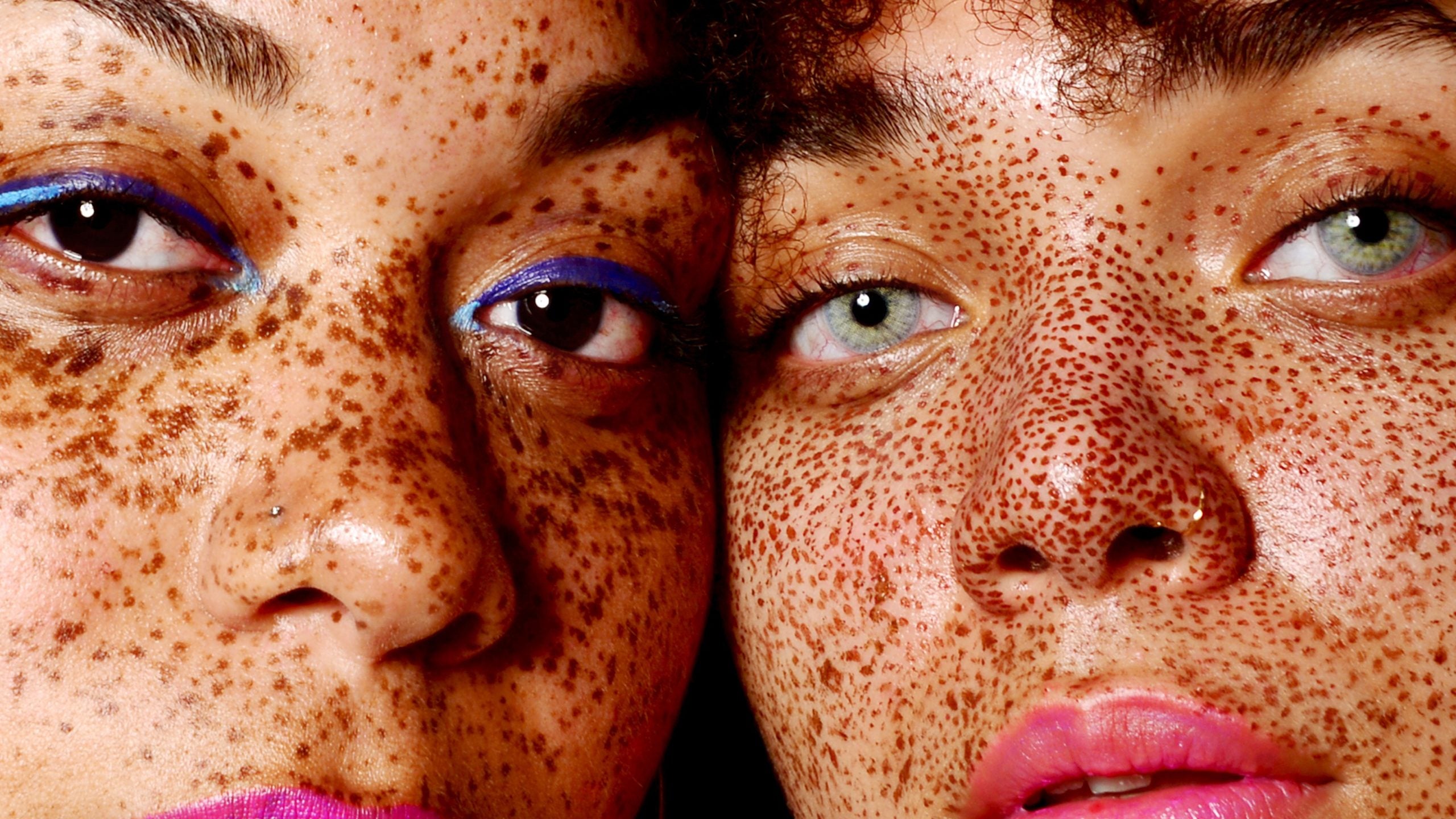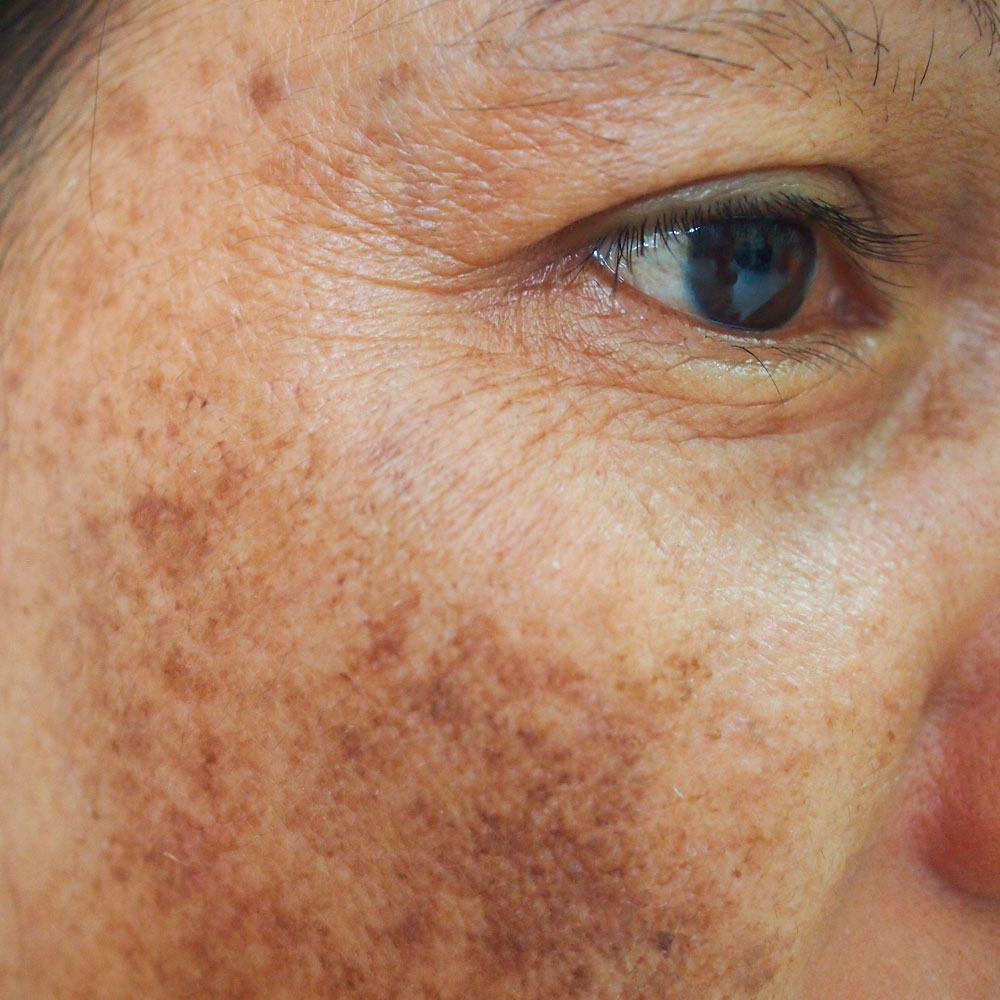Have you ever noticed areas on your skin that look a little different in color, perhaps a bit darker than the rest? It’s a pretty common thing, actually, and it has a name: hyperpigmentation. This simply means that some parts of your skin have taken on a deeper shade than their surroundings. It’s just a natural variation, really, that a lot of people experience, and it’s something that, you know, makes each person’s skin truly unique, much like the idea of a "hyperpigmentation emoji" might suggest for digital expression.
You see, it's the extra melanin, which is the natural coloring stuff in your skin, that actually makes these little spots or patches appear. These can show up in a pretty wide range of colors, like a warm brown, a deep black, a soft gray, or even a noticeable red or pinkish shade, really. It’s just how your skin sometimes expresses itself, you know? These variations are often quite visible, making them a part of someone's overall skin appearance.
So, as we talk about these skin changes, we'll look at what might cause them, the different ways they can show up, and some common ways people choose to care for their skin when these spots appear. We'll also consider how thinking about something like a "hyperpigmentation emoji" helps us appreciate the wide variety of human skin and its natural characteristics, which is pretty cool, actually.
Table of Contents
- What is Hyperpigmentation?
- Why Do Some Areas of Skin Get Darker?
- Different Kinds of Skin Color Variations - Hyperpigmentation Emoji Styles?
- What Makes Skin Produce More Color?
- How Can We Manage Skin Darkening - A Hyperpigmentation Emoji Guide?
- Talking About Hyperpigmentation Emoji and Representation
- When Skin Changes Color - Is That a Hyperpigmentation Emoji Moment?
- Getting Help for Skin Darkening
What is Hyperpigmentation?
This is a condition that shows up pretty often, making some areas of a person's skin appear a darker color than other parts. It’s a bit like when you see a specific spot on a piece of fruit that’s a different shade, but on your skin, it’s just a natural occurrence. The reason for this color change is extra melanin, which is the natural pigment that gives your skin its unique color. This extra coloring material creates those spots or patches that can look like a light brown, a deep black, a soft gray, a noticeable red, or even a delicate pink. It’s just how your body sometimes reacts and expresses itself, you know?
When we talk about the skin, it’s pretty interesting to think about how it’s put together. Your skin has different layers, and this extra color can show up in the very top layer, which is typically called the epidermis. Or, sometimes, it can be found in the layer just below that, known as the dermis. So, it’s not always just on the surface; sometimes, the color change runs a little deeper, which, in a way, can explain why some of these spots might seem to stick around longer or be a bit more noticeable than others, you see.
These darker areas are, more or less, not usually something that causes any harm to your health. They are mostly just a visual change in the way your skin looks. However, people sometimes feel like they want to address these spots because of how they appear. It’s totally a personal choice, you know? Like, if you were to imagine a "hyperpigmentation emoji," it would represent these very unique color variations on skin, showing that having such diversity in skin appearance is pretty normal, actually, and quite beautiful.
Why Do Some Areas of Skin Get Darker?
Well, there are several different things that can cause specific parts of your skin to take on a darker shade. One of the most frequent reasons is spending time out in the sun. The sun’s rays can really encourage your skin to make more melanin as a way to protect itself from potential harm. This increased production then leads to these areas becoming darker. It’s kind of like your skin putting on an extra layer of sun protection, but it shows up as a change in color, you know?
Certain things you might take for your overall health, like some specific types of medications, can also play a part in these skin changes. And, for some women, especially during pregnancy, there can be noticeable shifts in skin color. This is often referred to as melasma, or sometimes even the "mask of pregnancy," and it’s quite a common experience. It’s basically a hormonal shift that causes the skin to react in this particular way, which is fascinating, really, how the body adapts.
Then there are some health situations that can lead to skin darkening. For instance, certain conditions, like Addison’s disease, can cause the skin to get darker in specific spots. This can be a sign that something else might be going on inside the body, so, in that case, it’s something a doctor would definitely want to look into. These changes are just your body communicating, in a way, that it needs a little bit of attention or care, which is pretty important.
Different Kinds of Skin Color Variations - Hyperpigmentation Emoji Styles?
When we talk about skin getting darker, there are a few specific types that come up pretty often in conversation. Age spots, for instance, are those small, rather flat, dark areas that usually show up on parts of your body that have been exposed to a lot of sun over the years, like your hands or your face. They are, you know, a pretty natural part of getting older for many people, basically, as skin experiences the world.
Melasma, as we mentioned earlier, is another common kind of skin darkening. It typically shows up as larger, somewhat blotchy patches, often on the face, covering areas like the forehead, cheeks, or the upper lip. It’s very much connected to hormones, so it’s something you see quite a lot during pregnancy, or if someone is using certain birth control methods. It’s a very distinct pattern, actually, almost like a gentle mask that appears on the skin.
Skin inflammation can also leave behind darker marks once it heals. If you've had something like acne, or a skin condition such as eczema, or even just a simple cut or scrape, once the area recovers, that spot might look a bit darker than the skin around it. This is called post-inflammatory hyperpigmentation, and it’s the body’s way of healing itself, but with a little extra color left behind. It’s like a temporary reminder from an old injury, in a way, which, you know, makes sense when you think about the body’s repair processes.
What Makes Skin Produce More Color?
At its core, hyperpigmentation happens when your skin makes too much melanin in certain specific areas. Melanin is the natural pigment that gives your skin, your hair, and your eyes their distinct color. Think of it like a tiny factory within your skin, and sometimes that factory goes into overdrive in particular spots. This extra output of coloring material then shows up as a darker patch on your skin, you know, right there on the surface.
This excess production of melanin can be set off by a number of different things. Sunlight, as we discussed, is a very big one because the sun’s ultraviolet rays really stimulate melanin production as a way to protect your skin from potential damage. It’s a natural defense mechanism, really, but it can often result in an uneven skin tone. So, basically, your skin is trying to help you out and keep you safe, but it sometimes leaves a visible mark as a result.
Other triggers include shifts in your body’s hormones, which is why conditions like melasma are so commonly seen during pregnancy or when someone is taking certain medications. There's also the body's natural healing process after an injury or a period of inflammation, which can cause a temporary overproduction of melanin. It’s just how your body works, in some respects, trying to mend things and sometimes leaving a little reminder of what it’s been through, which is pretty interesting.
How Can We Manage Skin Darkening - A Hyperpigmentation Emoji Guide?
When people feel like they want to address these darker spots on their skin, there are several different approaches they might consider. One common method involves using special products that you put right onto your skin. These are often called topical products, and they usually contain ingredients that are designed to help gently lighten the appearance of the dark spots over a period of time. It’s not an overnight fix, but with regular and consistent use, you can often start to see a difference, you know, in the overall evenness of your skin tone.
Some of these products might have ingredients like vitamin C, niacinamide, or certain gentle acids that are known to help even out skin tone. It’s pretty important to pick products that are truly right for your specific skin type and to use them exactly as they are instructed. It’s always a very good idea to talk to a skin care professional or a doctor before starting any new routine, just to be sure it’s the best and safest path for you, basically, to get the results you’re looking for.
Protecting your skin from the sun is also a really big and absolutely essential piece of the puzzle when it comes to managing hyperpigmentation. Using sunscreen every single day, even on those cloudy or overcast days, can help prevent new dark spots from forming and also keep any existing ones from getting darker. Wearing wide-brimmed hats and seeking out shady spots when the sun is at its strongest are also pretty good ideas. It’s about being smart with your sun exposure, in a way, to help your skin stay its most even and clear, which is a key step.
Talking About Hyperpigmentation Emoji and Representation
The very idea of a "hyperpigmentation emoji" brings up a pretty interesting and important point about how we see and how we show different skin types in our digital conversations. Skin, you know, comes in so many different shades and textures, and it often has unique marks, like tiny freckles, noticeable moles, or yes, even areas of hyperpigmentation. These are all just a part of what makes each person's skin truly unique and tells a little bit of their story, basically.
Having an emoji that, in a way, represents these natural and common skin variations could really help make digital communication feel much more inclusive and welcoming for everyone. It’s about acknowledging that not all skin is perfectly uniform or completely flawless, and that’s perfectly fine, actually. It's just a way to show that all skin, with all its beautiful differences, is valid and worthy of being seen, you know, in its own unique way. It's about celebrating the wonderful diversity of human appearance, really.
When we use emojis in our messages, we're trying to express ourselves and connect with other people on a deeper level. If there's an emoji that helps people feel seen and truly represented, especially when it comes to common and natural skin features, that’s a really good thing. It’s a small step, perhaps, but it can make a significant difference in how people perceive themselves and how they perceive others, which is pretty important, actually, for fostering a sense of belonging



